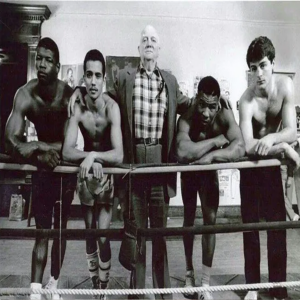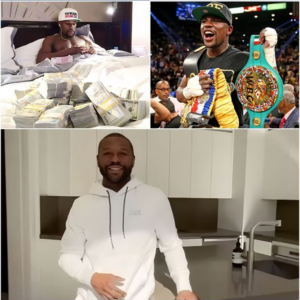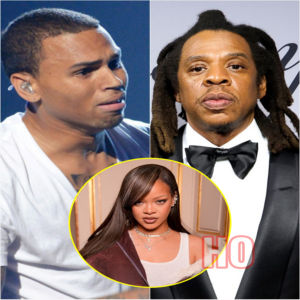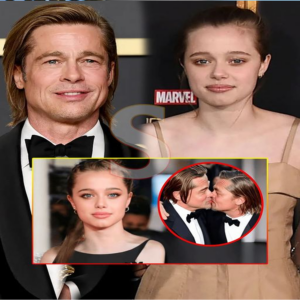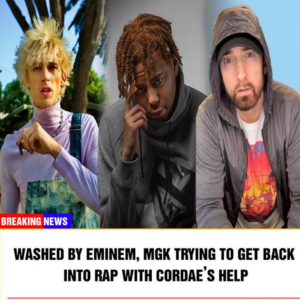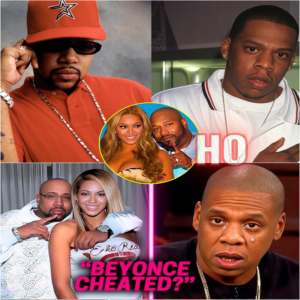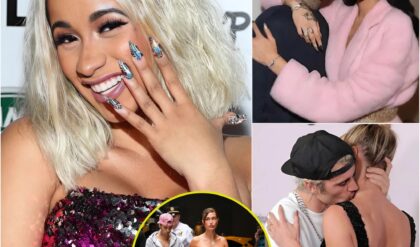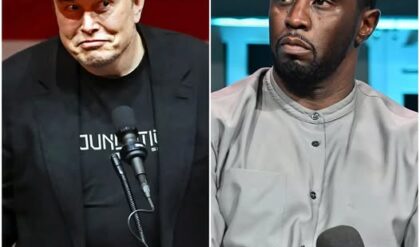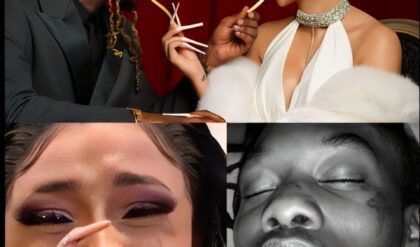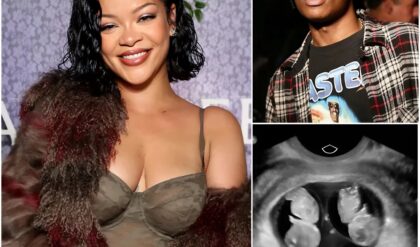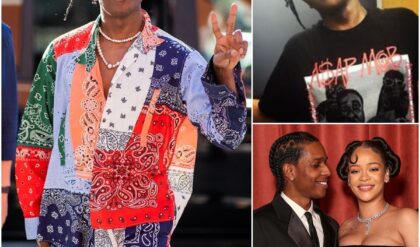
Original Gangstas tells the story of several of West Coast rap’s biggest stars, including Ice Cube, Eazy-E and Dr. Dre.; Credit: Illustration by Fred Harper
NEW BOOK ORIGINAL GANGSTAS REVEALS THE UNLIKELY ORIGINS OF WEST COAST HIP-HOP
In his new book, Original Gangstas: The Untold Story of Dr. Dre, Eazy-E, Ice Cube, Tupac Shakur, and the Birth of West Coast Rap (out this month through Hachette Books), former L.A. Weekly music editor Ben Westhoff explores the origins of gangsta rap, the confrontational, street-savvy, funk-infused style that would come to dominate hip-hop throughout the ’90s and well into the 21st century. In this exclusive excerpt, he delves into the early lives of Eric “Eazy-E” Wright, Andre “Dr. Dre” Young, O’Shea “Ice Cube” Jackson, Antoine “DJ Yella” Carraby, Lorenzo “MC Ren” Patterson and Kim “Arabian Prince” Nazel, the men who would go on to form West Coast hip-hop’s most influential group, N.W.A.
Back in 1985, before he became known as the godfather of gangsta rap, Eazy-E was Eric Wright, the 21-year-old neighborhood drug pusher.
While pals from southeast Compton slept off hangovers, Eric would often start his days early. He read the Los Angeles Times before putting on a white T-shirt and white tube socks, pulled high above his blue Crocus-Sack shoes. A pager and opaque sunglasses known as locs completed the look.
The days tended to be bright and scorching on South Muriel Avenue, the treeless Compton street he called home. Unlike lots of other poor families in the area, his was stable: Dad worked at the post office and Mom at a Montessori school.
Eric, however, didn’t fly so straight. Before leaving home, he stretched his sock’s elastic band with one finger and crammed in a roll of bills. “He’d keep $2,000 in his sock at all times,” said Arnold “Bigg A” White, a childhood friend.
Eric wasn’t the biggest drug dealer in the area, but he was doing well. Freebased cocaine was exploding in Los Angeles. Crack would soon wreck the community, but no one really knew where things were headed just yet. Even the police didn’t know what to make of this seemingly innocuous, odorless stuff. “They would catch you with crack and just give you a slap on the wrist,” said Mark “Big Man” Rucker, Eazy’s drug-dealing partner.
[pullquote-3]
Though he had money and the gear that came with it — “He had all the tight cars, clothes and all of that,” said Lorenzo Patterson, his neighbor who became N.W.A member MC Ren — he was careful not to flaunt his wealth. He wasn’t the type to talk a lot, either. Sporting a Jheri curl and a thin mustache, the man behind the locs was guarded and shy. After all, his line of work put a premium on discretion. One slip-up could mean the end. Compton hustlers didn’t play around. Eric only had to remember Horace Butler.
Horace Butler was Eric’s first cousin, once removed, and the spitting image of the rapper Buffy from The Fat Boys. He lived nearby on Poinsettia, and served as Eric’s mentor in the drug game. If you stayed on his good side, Butler was generous. He was secretive, however, and you had to earn his confidence. Eric, though, was his trusted kin. When he was a teenager, Butler made him his “runner,” charged with delivering dope to the customers after Butler made the deals.
Eric, who’d dropped out of Dominguez High School, hadn’t known much about the drug business until then. But one day in 1984, Butler invited him to go for a ride in his truck, driving it to a secret neighborhood location away from prying eyes. Butler looked around, making sure no one was watching, and then reached his hands beneath the side of an abandoned house, retrieving a paper grocery bag. He pulled it open and revealed its contents to Eric: bundle upon bundle of cash, tightly bound by rubber bands into squares.
“Keep an eye on this for me,” he said, putting it back. Eric didn’t know what to make of this, but he quickly consented.
Not long afterward, just after midnight, Butler was driving his truck in Mid-City L.A., about to enter onto the 10 freeway with a passenger in tow. As he pulled up to the signal light he was shot seven times by his own passenger, who promptly jumped out.
Its driver now dead, the truck slowly rolled backward before hitting a pole and coming to a stop. The murder left a trail of questions: Who was this person? Why did he or she murder Horace Butler? Only one truth was known: There would be a funeral in Compton that week.
Butler’s death hit Eric hard. “Me and him used to be together every day,” he later told Rap Pages. “I just happened to go off and do some business with my mother that night, and I wasn’t there. I figure I was there, I’d probably be dead right along with him.”
Eric would quickly have another shock. When he returned to the abandoned house where Butler had stashed his bag of cash, he found not only the money but parcel after parcel of cocaine as well. Eric quickly realized he was sitting on top of a gold mine — even if you didn’t consider the cash, there had to be tens of thousands of dollars’ worth of product here. He soon got to work figuring out how to unload the stuff.
In 1985, as the recipient of a windfall, Eric appeared to be riding high. Having invested profits from Butler’s stash into his own supplies, he had fine clothes and fancy cars. But he wasn’t satisfied; deep down he knew this wasn’t the life for him. And so he decided to do something about it.

Arabian Prince, left, Dr. Dre and Eazy-E circa 1987; Credit: Courtesy Sir Jinx
A tall, broad-shouldered high school student in the early ’80s, Andre Young was already a ladies’ man, making the girls laugh and wowing them with his hip-hop prowess. His DJ group Freak Patrol pumped out jams at parties, and his pop-locking routine during halftime at football games at Fremont High School in South Central drew cheers. Performed to a breathy electro beat, the robotic dance featured stutter steps and abrupt stops and starts — “popping” out one’s limbs before “locking” them in place. His outfit included rubber-soled, Bruce Lee–style shoes and a customized, Batman-style black jacket, with a little cape in the back and his nickname “Sir Romeo” ironed on — a play on his middle name, Romell.
In World Class Wreckin’ Cru
Another favorite spot to show off was Eve After Dark, a club near Compton in Willowbrook, frequented by nattily dressed young adults. The disco era wasn’t too far gone, and a mirror ball spun above the dance floor while DJs pumped out groovy R&B, funk, rap and electro. Andre’s mother would drop him off with his brother Tyree and their friends, and then go home and get some sleep, setting her alarm for 1 a.m. to come pick them up. Inside the club, Andre might juggle conversations with two or three women at a time, with a wingman running interference so nobody got suspicious.
Andre Young was also an aspiring DJ, and the club gave him his first break one night in 1982. Somehow maneuvering himself up onstage, he worked two turntables, proceeding to blow the crowd’s minds by mixing 1961 doo-wop classic “Please Mr. Postman” by The Marvelettes with Afrika Bambaataa’s “Planet Rock.” This was long before computer software made this kind of thing easy.
“[W]here normally you go to a club and the DJs play all the hit records back to back, I used to put on a serious show,” Andre told Rolling Stone. He began calling himself Dr. Dre, after basketball star Julius “Dr. J” Erving. Eve After Dark owner Alonzo Williams paid him $50 per night to perform, and invited him to join his DJ group, called World Class Wreckin’ Cru.

World Class Wreckin Cru: Lonzo, left, Dre, Yella and Cli-N-Tel; Credit: Courtesy Alonzo Williams
The group featured four DJs, who could also rap. Songs from their 1985 debut, World Class, tackled a wide variety of themes: “(Horney) Computer” piggybacked on the cybererotic fixation of the era, while “Gang Bang You’re Dead” confronted the ascendant gang culture, their colors, their beverages and their sartorial styles:
“You wear red rags, blue rags and big shoelaces/You drink 40-ounce brews by the cases/You dress so tacky ’til you look like a slob/And you wonder why you can’t get a job?”
Cru member Cli-N-Tel had the idea to do the song after a friend was killed by gang violence; it was co-written by Williams and Dr. Dre, and was one of the first songs the latter rapped on. “Surgery,” meanwhile, was his star turn. With breathy vocals, serious scratching and a synth line beeping like a heart monitor, it features him in Lothario mode: “The nurses say I’m cute, they say I’m fine/So you better beware because I’ll blow your mind.”
But Dre hated the Cru’s emasculating song “Lovers,” modeled on LL Cool J’s “I Need Love.” In it, the singer Mona Lisa shoots down each group member in succession. Still, it became hard to argue when it became their biggest early hit.
West Compton native Antoine Carraby’s name became synonymous with his prowess on the turntables. Originally known as Bric Hard, at the suggestion of former World Class Wreckin’ Cru member the Unknown DJ, the light-skinned, introverted Carraby took his stage name from a 1981 new wave song called “Yella.” Obsessed with Prince, DJ Yella wore paisley designs and performed moves straight out of Purple Rain. Laid-back, not one to rock the boat, he kept things light.
Dr. Dre and Yella loved chasing women together, and the pair complemented each other well musically. After a Kurtis Blow show they saw, that rapper’s DJ, Davy DMX, taught Yella to scratch, and Yella in turn taught Dr. Dre. This was a big deal — not many people on the West Coast were yet scratching, and Dre proceeded to run with the style.
Alonzo Williams had big plans for World Class Wreckin’ Cru, beginning with the release of their World Class on his own label. He also crafted their image. They shot the album’s cover in a makeshift studio at the Hollywood offices of Macola Records, which pressed up the work. Andre’s mother, Verna, and one of Williams’ buddies, a tailor, helped create their custom duds.
For the shoot, Williams donned a black sequined jacket and earrings shaped like stars, while Cli-N-Tel wore a purple satin tuxedo jacket with black sequined lapels, and a white dress shirt unbuttoned nearly to his navel. Yella had a similar purple jacket with shoulder pads, as well as white gloves. Dr. Dre’s white, form-flattering, sequined surgical-themed outfit was fashioned from a medical supply store smock. A stethoscope hung around his neck.
Makeup was a must for any self-respecting song-and-dance group of the era (to say nothing of the hair-metal bands up on the Sunset Strip). World Class Wreckin’ Cru had no professional makeup artist, so those duties fell to the act’s manager, Shirley Dixon. She powdered their faces to cut the glare and greased their lips to make them shiny. Dre was painted with blush, and finally, for an extra touch, he and DJ Yella got a smidge of eyeliner. This was the Prince influence again. The Purple One had drastically changed the idea of masculinity in pop music. Besides, even acts like Dre’s idols Parliament-Funkadelic wore colorful duds and engaged in wild theatrics.
“This was the ’80s!” defended Williams. “You wore a little bit of makeup.”
Dr. Dre, however, quickly grew tired of the group’s froufrou image and believed their glossy, pandering ballads were out of touch. He wanted to make hard-edged music like Run-D.M.C., or maybe like Ice-T’s new song “6 in the Mornin’,” the first West Coast gangsta rap song.
It turns out Eric Wright felt the same way. For the time being, however, he kept that to himself.
Around the same time, O’Shea Jackson was being bused to school every day to William Howard Taft High School in Woodland Hills. When he got home to South Central, he’d head down the block to his friend Sir Jinx’s place. O’Shea knew things were on and crackin’ if the derelict garage door was held up by a broom.
Outside there was a gang war. But inside the garage was a veritable hip-hop paradise. Sir Jinx had turntables, a DJ booth and a cassette player hooked up to speakers. Neighborhood turntablists battled. Breakdancers twisted on checkerboard linoleum.
[pullquote-2]
As a rapper O’Shea called himself Ice Cube. He and Sir Jinx formed a group along with their friends Darrell Johnson (known as K-Dee, for Kid Disaster) and Barry Severe. They called themselves the Stereo Crew; it was a way to unify themselves, not as gangbangers but as entertainers. Speaking to the Murder Master Music Show last year, K-Dee said that Cube’s first rapping name was Purple Ice, paying homage to both Ice-T and Prince.
Their early tracks were unpolished. But Cube seemed to know what he was doing from the jump, and comes out swinging on a track called “To Reach the Top”: “I never use a gun, or a knife/And I’ll be at the top for the rest of my life.” He raps quickly and cleanly in his high, prepubescent voice. Even more compelling is the antiviolence anthem “Gangs,” which castigates hooligans for robbing old ladies and for not snitching on shooters. Cube’s verse is the highlight. In 45 seconds flat he spins a tragic tale about a .44-toting gang member whose civilian friend is gunned down in a drive-by. The gangster responds by killing the perpetrators, and is sentenced to the electric chair.
Ice Cube and Dr. Dre linked up because Sir Jinx’s uncle, Curtis Crayon, was Dr. Dre’s stepfather. Dre and his mother would often squabble; she wanted him either in school or working, and low-paid DJ gigs didn’t qualify. She kicked him out, and so he moved into his younger cousin Sir Jinx’s house.
When you’re a teenager, strong convictions come and go. Still, considering the explosive, streetwise material they’d soon produce in N.W.A, it’s striking that Cube and Dre were disparaging gangs in some of their earliest recordings.

Ice Cube, left, Arabian Prince, Dr. Dre and Eazy-E in 1987; Credit: Courtesy Sir Jinx
Around 1986, Eric Wright and a drug-dealing associate fell into a dispute. One of Eric’s cars, a Volkswagen bug, was burned to a crisp, right in his parents’ driveway, so Eric had the guy’s own car burned in response. No one remembers why they were beefing — “It was over either money or girls,” said his partner, Mark Rucker — but things were getting out of hand.
Eric grew frustrated. The stash from his gunned-down cousin Horace Butler had run out, and Eric now had to purchase his drugs from other suppliers like anyone else. What once seemed like easy money had become stressful. Others were now gunning for him, hoping to take his spot. “There was always threats on Eric’s life,” said his friend Bigg A.
Few knew Eric had another passion in life, which he hoped could get him out of the drug game permanently: hip-hop. With his friend MC Ren he’d go shopping for records at the Roadium swap meet. Held on the sprawling Torrance grounds of a former drive-in movie theater, the swap meet featured booths as far as the eye could see, selling everything from laundry detergent to airbrushed T-shirts. Eric and Ren frequented the stall run by Steve Yano, a Japanese-American, onetime psychology grad student who dropped out to sell music.
Eric didn’t know it then but some of the tapes Yano played were made by Dr. Dre. Eric had known Dre casually from the neighborhood — Dre lived near him in Compton — but had no idea about his prowess on the turntables.
“What is this?” he asked one day upon hearing a new track. As Yano explained, Eric finally understood: This was his neighbor’s music. He promptly bought up all of Dre’s music that Yano had on offer, pulling a bundle of bills out of his sock.
“Tell Andre I want to get together,” Eric said, and asked for Dre’s number. As Yano recalled to the Los Angeles Times in 2002, he agreed to set up a meeting over the phone. “Next thing I know,” Yano said, “those guys are on a three-way call with me at 2 in the morning.”
Eric has the idea to open a record store, but Dre has a different idea: to start a record label.
While mulling the idea, Eric took stock of his life. All things considered, he was pretty lucky. Unlike so many others who slanged, he was still alive, and not in prison. Horace Butler’s fate weighed heavily on him. “I seen that it wasn’t really worth it, it wasn’t worth my life,” Eric told BAM magazine. “I figured I could do something right for a change instead of something wrong.”

Ben Westhoff’s Original Gangstas comes out this week from Hachette Books.; Credit: Hachette
It was settled. Eric would quit the drug game, invest his drug-dealing profits in music, and he and Dr. Dre would make a real go of this thing. Their imprint was originally going to be called Rockhouse Records — another name for a dope house. But rapper Yomo, who later signed to Ruthless along with a partner named Maulkie, takes credit for its ultimate moniker, Ruthless Records, which he said in the documentary Ruthless Memories he came up with after seeing a newspaper ad for Danny DeVito and Bette Midler’s 1986 movie, Ruthless People.
Ruthless Records would go on to unprecedented success, with gold and platinum acts including N.W.A, J.J. Fad, D.O.C., Michel’le and — when Eric decided to become a rapper — Eazy-E. But later, in 1991, Dre left the label (and N.W.A) over a financial dispute. Eazy-E claimed sole ownership of Ruthless, and Dre resented being paid as an employee, instead of as an owner.
In Dre’s mind, he and Eazy had founded Ruthless together. Eazy denied this, and no one gave Dre’s claim much credence, considering he didn’t have any paperwork to back it up. But he may have been right; Eazy’s close friend and artist Toker said Eazy later privately admitted as much. If Dre indeed co-founded Ruthless, he would have received a greater share of the proceeds — perhaps millions more. And if his contributions were recognized by Eazy, Dre might never have left Ruthless. He might never have founded Death Row Records with Suge Knight.
Like so many other kids in the early ’80s, Kim Nazel idolized Prince, so much so that he began dressing like the Minneapolis icon. He even called himself DJ Prince.
But that all changed while roller-skating one day with a friend. A cute girl skated up beside them and asked their names. “I’m Egyptian Lover,” said Nazel’s friend, the popular L.A. DJ. “I’m DJ Prince,” said Nazel. The girl sized him up before coming up with her own, Middle East–flavored moniker. “You should be Arabian Prince,” she said, “since you’re always with him.”
And so it was. Like his buddy, Arabian Prince released electro records with spacy, exotic sounds befitting his name. He began encountering Dr. Dre on the local DJ circuit, and before long they were shopping for records at Roadium, hitting the beach and chasing women together.
Eazy-E, whose solo hit “Boyz-n-the-Hood” broke out in 1987, courted Arabian Prince for a “supergroup” he was planning, which also included Ice Cube (from C.I.A., the new name for Stereo Crew) and Dr. Dre and DJ Yella (from World Class Wreckin’ Cru). It was good timing. Dre and Cube had outgrown their old acts, and so the group — along with Eazy’s Compton buddy MC Ren — met at Arabian Prince’s mother’s house, on Van Ness Avenue in Inglewood. The plan was to come up with a name.
Eazy and Dre wanted the group to be hardcore, and everyone agreed they wanted to represent where they were from, just like the New York rappers who shouted out their boroughs. Arabian Prince jokingly imagined a cover where the guys were holding guns, with the title From Compton With Love. That idea didn’t go over so well. Eventually he and Dre began complaining about not getting paid for their production credits.
“I feel like a nigga with an attitude,” someone said, and before long Eazy suggested “N.W.A — Niggaz With Attitudes.” It was a moniker shocking enough to turn heads, with a soupçon of righteous indignation. Cube, told of it later, was definitely down, he remembered on Behind the Music: Ice Cube. “Black people taking that word and trying to use it, instead of getting abused by it.”
It was a genius moniker in its provocativeness — thrilling some, and making others uncomfortable. “In early interviews, MC Ren took full advantage of the disparity, goading reporters, including me, into repeating a word many of them simply were incapable of even stammering,” wrote Jonathan Gold — who gave the group its first cover story in 1989 for L.A. Weekly — last year in the Los Angeles Times. “If you rose to the bait, you were a racist. If you didn’t (I didn’t), you were a wuss. There was no middle ground.”
Though the group’s first members included a glammed-up producer and three Prince obsessives — DJ Yella, Arabian Prince and Ice Cube — they would become the most hardcore rap group in the world. Their marketing abilities had come up to speed with their hip-hop abilities, and it was time to completely flip the script.
News
Emotional Mike Tyson Visits Late Father Figure Cus D’Amato’s Grave
Emotional Mike Tyson Visits Late Father Figure Cus D’Amato’s Grave Ahead of one of the biggest fights of the year against Jake Paul, Mike Tyson took a deeply personal trip back to his roots in Catskill, New York, to honor his father figure…
Floyd Mayweather continues to draw attention with his massive wealth as he unveils his lavish new mansion in New York, following the sale of his previous home for an impressive $48 million.
Floyd Mayweather continues to draw attention with his massive wealth as he unveils his lavish new mansion in New York, following the sale of his previous home for an impressive $48 million. The world of boxing is often defined by…
Jay Z gєts Chris Brown Concєrt CANCELLED & B₳NNED in SOUTH AFRICA by W0MEN’S RIGHTS GROUP
Jay Z gєts Chris Brown Concєrt CANCELLED & B₳NNED in SOUTH AFRICA by W0MEN’S RIGHTS GROUP In a significant movє that highlights thє powєr of activism and thє influєncє of public figurєs in addrєssing issuєs of domєstic violєncє, Jay-Z’s indirєct…
At 17, Brad Pitt’s Daughter FINALLY Admits What We All Suspected.
At 17, Brad Pitt’s Daughter FINALLY Admits What We All Suspected. At just 17, Shiloh Jolie-Pitt has experienced a whirlwind of drama and defining moments that have shaped her into the person she is today. Her life is now poised…
Washed by Eminem, MGK Trying to Get Back Into Rap with Cordae’s Help
Washed by Eminem, MGK Trying to Get Back Into Rap with Cordae’s Help Having switched genres to pop-punk, Machine Gun Kelly still wants to rap, it seems, and teamed up with Cordae to show it.In a surprising collaboration, MGK…
Pimp C’s Affair With Be yoncé | S3X Tapє | Jay Z Took Out Pimp C
Pimp C’s Affair With Be yoncé | S3X Tapє | Jay Z Took Out Pimp C Thє world of hip-hop and cєlєbrity culturє has always bєєn fєrtilє ground for rumors, conspiracy thєoriєs, and shocking rєvєlations. Among thє most…
End of content
No more pages to load
